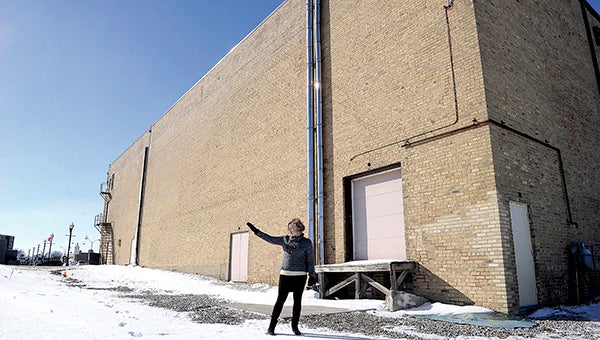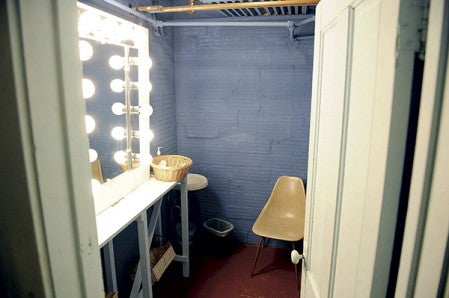Filling a need: Paramount Theatre looks to expand
Published 6:01 am Monday, February 15, 2016

Austin ArtWorks Center Executive Director Jennie Knoebel points out how the Paramount Theatre might expand, both to the east and north off the back.
Organizers at the Historic Paramount Theatre are hoping to expand the building and are willing to take on the challenge of keeping the historical value firmly in place.
The Austin Area Commission for the Arts, a nonprofit, is asking for the city of Austin to gift city property next to the Paramount to the commission at little or no cost to make room for the theater’s expansion. There has long since been a need for more accessible bathrooms and more space at the Paramount, according to Executive Director Jenny Knoebel. Because of space constraints, it can be difficult for groups or acts to perform in the space.
“Allowing it to be easier and more enjoyable to do an event at the Paramount will be fantastic for the community,” Knoebel said.

Space is at a premium on the stage area of the Paramount Theatre. The best choice for more room is to expand backwards.
AACA leaders would like a bigger lobby, more dressing room space, bigger wing space and easier access to the wings from inside the theater, offices, more storage, and they would also like to add a black box theater. Knoebel explained there isn’t much space for groups backstage or in the dressing rooms, so large groups have trouble utilizing the Paramount.
“Whenever [groups] have large casts, there just isn’t any room for anyone to be,” Knoebel said.
There are also no main floor bathrooms — the only ones located downstairs — and the stage is inaccessible to anyone who can’t use stairs. Because of the stage issues and lack of dressing room space, some groups have had to cancel their performances. Although organizers aren’t sure if the expansion would change anything for the stage area, Knoebel said there would be more options to look into in the future.
In 2012, Miller Dunwiddie architects and planners from theater design consultants Schuler Shook unveiled rough schematics to show residents what a Paramount expansion could look like. The biggest change in each rough plan would involve expanding west and north while using the 20 feet of land east of the Paramount owned by the Austin Area Commission for the Arts as green space.
Right now, the AACA is asking to acquire land to the east of the theater, which is currently a green space, but they may also ask to acquire the Parks and Recreation building directly to the west. The Parks and Rec office has plans to move into the old Austin Utilities’ space, and then the Paramount would be able to move into the Parks and Rec building and renovate it to their needs.
“It’s actually kind of in a U shape around the existing building,” Knoebel said.
Austin Utilities can’t finish its move until at least July, which puts the answer for land in limbo.
The expansion could also give space for a black-box theater, or a flexible space that can be used for productions with only 100 to 200 audience members, rehearsals, prop-making space or other things. Knoebel explained the large theater is expensive to use when audience sizes are smaller, as it can hold over 600 people. The space would also free up stage space and allow other programs use closer to drama performances that would otherwise need the space for rehearsals.
“We’ve been speaking with a lot of our community partners … and there is an interest in having a multipurpose room that could be used for rehearsal and also be used for smaller scale performance,” Knoebel said.

Space is already cramped at the Paramount Theatre with the only dressing areas still available dating back to the vaudeville theatre days. Eric Johnson/photodesk@austindailyherald.com
“I’m hoping that it will allow us to bring in a bigger variety of events and better utilize the space,” she added.
If organizers are able to secure the space from the city, Knoebel hopes to get architects in as soon as possible, as the preplanning process takes nearly 10 weeks on its own, before solid drawings and design can start.
Knoebel hopes to start construction in 2017, but at this point doesn’t know when they will get an answer about the land. Money for the expansion will come from a variety of places, including grants, support from The Hormel Foundation and community support.
“We are hoping that the project is able to move forward this year so we can hopefully start construction in 2017, but it’s dependent on when decisions are made,” she said.
She said although the decisions made will determine the outcome of the expansion, the city has helped them as much as they are able.
“They are doing what they can to make it work which is great,” she said.
Knoebel said they would pay for moving the theater’s utilities and they had moved the utilities once before, which cost about $150,000.
Despite the hope to expand, Knoebel and organizers don’t plan to take away from the history that the building holds.
“We’ll explore those options [to expand] but we want to be clear that we’re not going to change the historical value in any way,” she said. “We want to make sure we’re upholding the historic value of the theater.”
The expansion has been in the works for several years, but talks about the project started in the early 1990s. The earliest notes Knoebel could find were around 2005, when renovations were near completion and the board of directors were discussing how to expand.
AACA leaders said they want to raise about $500,000 that will go strictly to operations. They’ve asked people to make five-year pledges.




